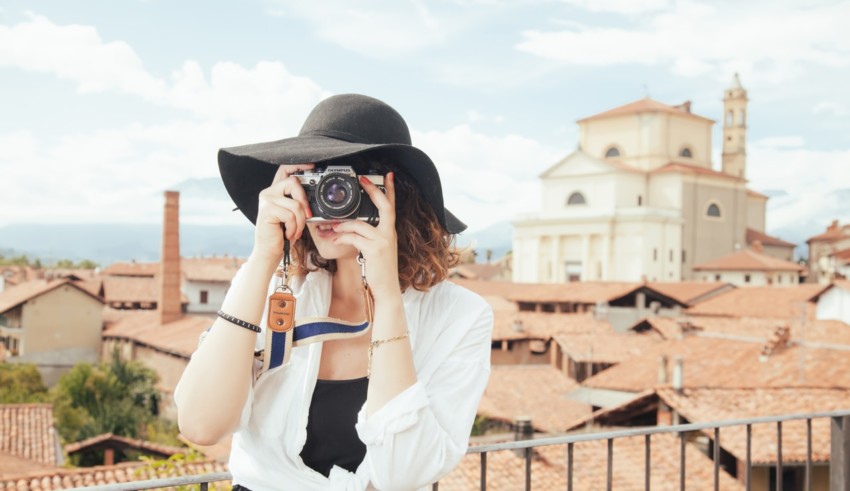
Looking to buy a DSLR but you are on a tight leash as far as money is concerned. Happens to the best of us no? If you have around about 25K to spend, then there are a few options as far as DSLRs are concerned, although not many.
So in this article, we are going to tell you about the cameras you can buy in and under Rs.25000 which would include both DSLRs and non-DSLRs.
So let’s start with the best DSLR cameras under Rs.25,000.
The DSLRs under 25K – Entry-level but does the job
Nikon D3400 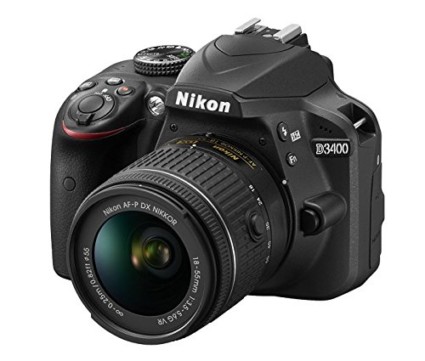
The Nikon D3400 is the very latest in Nikon’s entry-level lineup. It’s the fifth camera in the famed D3000 series and succeeds the Nikon D3300 which is next on this list. The D3400 pretty much comes with all the bells and whistles that you would expect from an entry-level DSLR. It has a 24.2 megapixel APS-C CMOS sensor (which incidentally is also seen in the D3300), a native ISO range of 100-12,800 which can be expanded up to 25,600. Design of the camera is pretty basic. It more or less carries the same design seen in all of Nikon’s D3000 series cameras, but compared to the earlier D3000 and D3100, the D3300 and the D3400 is smaller and more compact. They are also comparatively less in weight.
The camera is offered with the standard Nikkor AF-S 18-55mm kit lens, but you can also buy only the body and pair it with your choice of lens. When it comes to image quality, if paired with the good lens (say the Nikkor 50mm f/1.8G prime) the Nikon D3400 does produce good quality images. Don’t forget it does have a high megapixel sensor. In good lighting condition, the autofocus also works pretty fast. But don’t expect the autofocus to work perfectly if lighting condition is poor and in an extremely low light it can be a pain to get the camera to focus on your subject. In such conditions, you may have to go manual as far as focusing is concerned.
The biggest upgrade that the D3400 carries over the D3300 is the fact that you can remotely transfer photos from the camera to your computer or mobile phone using Nikon’s SnapBridge app, but It does not have a built-in Wi-Fi. Overall, the Nikon D3400 is a good camera for beginners at the price it comes in and if you are looking for an entry-level DSLR then the D3400 is surely cut for it.
Pros:
- Snapbridge
- Good battery support
- Easy and simple to use
- Good image quality
Cons:
- No touchscreen
- No Wi-Fi
- No 4K
[ryvl video_url=”https://www.reviewsxp.com/blog/nikon-d3400-review/” auto_play=”yes”]Read Nikon D3400 Detailed Review[/ryvl]
Nikon D3300 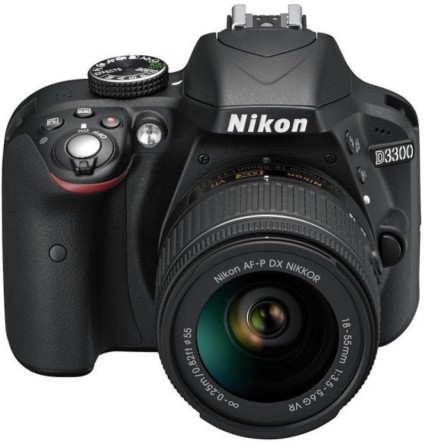
80 percent the same camera as the D3400 without the fancy Snapbridge and some other stuff and at a lower price. So if you find the D3400 to be above your budget, then you should surely take a look at the camera it replaced – the Nikon D3300. The D3300, when it came out, was a replacement for the erstwhile D3200. But it had one huge advantage over its predecessor.
With the D3300, Nikon had removed the optical anti-aliasing filter, thereby giving a great boost to image quality. Specs of the D3300 is more or less similar to the D3400, it also has the same 24.2-megapixel APS-C CMOS sensor with a native ISO range of 100-12,800 which can be expanded up to 25,600. The camera has an 11-point autofocus system, which works pretty well in daylight.
Design wise, the Nikon D3300 looks like any other entry-level DSLR. It has a box-like design with a 3-inch LCD screen at the back. It is also compact and weighs less than the D3200, which is a smart move given it’s an entry-level DSLR and in this segment, most people look to buy cameras with compact size.
When it comes to performance, the Nikon D330 is none less than any. It produces great quality images. The only drawback that we sensed in D3300 images is that in high contrast situations highlight and shadow details are not up to the mark. But this can be rescued during post-processing thanks to the camera’s great dynamic range.
The auto white balance performance is also good and performs satisfactorily in most weather conditions. ISO performance is good up to 3200, but after that images tend to become noisy. The camera does have an inbuilt noise reduction system, but it’s better to avoid that since it can take a heavy toll on the sharpness of images.
Overall, the D3300 is really a groundbreaking camera as far as the entry-level segment is concerned and it really sets a benchmark for others to follow.
Pros:
- Excellent value for money
- Great performance
- Compact design
- Easy to use
Cons:
- No built-in WiFi
- High image noise above 3200
- Low light focusing not good
[ryvl video_url=”https://www.reviewsxp.com/blog/nikon-d3300-review” auto_play=”yes”]Read Nikon D3300 Detailed Review[/ryvl]
Canon 1300D 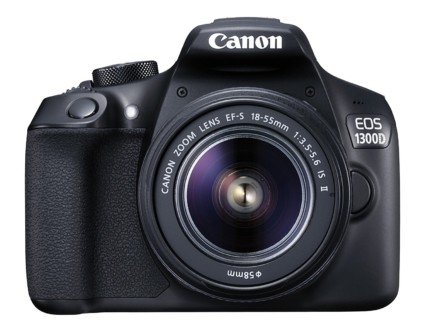
Another value for money DSLR, but this time it’s from Canon – Nikon’s biggest rival and competitor in the world DSLR market. The design and build of the Canon 1300D follow the blueprint of the 1200D. So if you have used a 1200D, you will notice that usability and design of both the cameras are not that different. Design wise, the 1300D is on the smaller side and has a compact grip. On the back, there is the viewfinder which covers 95% of the scene (one of the drawbacks of the 1300D).
Basic specs of the 1300D include an 18-megapixel APS-C CMOS sensor with native ISO of 6400, which can be expanded up to 12800. The camera has 9 autofocus points and can shoot at 3fps. Autofocus performance of the 1300D is average compared to Nikon’s cameras in the same range. It only has 9 AF points which are basically grouped towards the center of the screen.
The autofocus system does its job pretty good in daylight, but in low light condition, it struggles. Noise performance of the 1300D is also nothing to write home about. Above 1600 ISO images become extremely noisy.
Biggest update the 1300D has received over the 1200D is the inclusion of WiFi and NFC. Photos from the camera can be remotely transferred to a computer of smartphones via the use of the Canon Camera Connect app which is available for both Android and iOS users. When it comes to quality of the images, the Canon 1300D lags far behind its Nikon counterparts.
If you pair it good lenses then you may get decent quality images depending on the settings you use. Otherwise, the 1300D produces images which can be best described as at par with 1200D.
Pros:
- WiFi and NFC
- Good build quality
- Good design
Cons:
- Average noise performance
- Absence of touchscreen
- Limited viewfinder range
- Average image quality
[ryvl video_url=”https://www.youtube.com/watch?v=AXuM7mw9gyg” auto_play=”yes”]Read Nikon D3300 Detailed Review[/ryvl]
The Superzoom Monsters
Since in and under Rs.25K not many DSLRs are available, we have decided to include some of the best high-end point-and-shoot cameras in the listing. Yes, you won’t get DSLR features from them, but what you would get from them are superb image qualities and extreme zoom capability through which you can literally shoot the craters of the moon (no jokes here).
So let’s get started.
Sony Cybershot DSC-H300 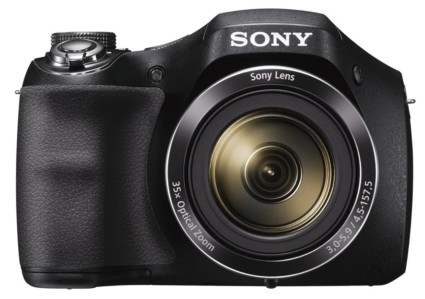
35X optical zoom and a whopping 70X digital zoom. Yes, that’s what you get if you buy the Sony DSC-H300. Zoom is not the only positive about this camera. It also boasts of a 20-megapixel CMOS sensor along with built-in image stabilization. Like all point-and-shoot cameras, the autofocus in the Sony DSC-H300 works fairly well in good lighting condition, but struggles extensively in a bad light, even focusing completely away from the subject at times. You can find it extremely challenging to make it focus on the right area. But then it’s a point-and-shoot camera and not really a DSLR and is not meant for professional use. Another big drawback of the DSC-H300 is the fact that highest shutter speed is only 1/500. So forget about clicking those birds in flight and those fast-moving cars. But other than that this camera does its job fairly well in the segments where a point-and-shoot is supposed to perform well. Image quality is also pretty good.
Pros:
- Face detection
- Good image quality
- Manual exposure
- 35X zoom
- Long battery life
- Built-in IS
Cons:
- No articulating screen
- Max shutter speed only 1/500s
- Max ISO 3200
- No Wi-Fi
- Pretty slow continuous shooting at 1fps
[ryvl video_url=”https://www.youtube.com/watch?v=P6vgbfG9wes” auto_play=”yes”]Watch Sony Cybershot DSC-H300 full Review[/ryvl]
Sony Cybershot DSC-H400 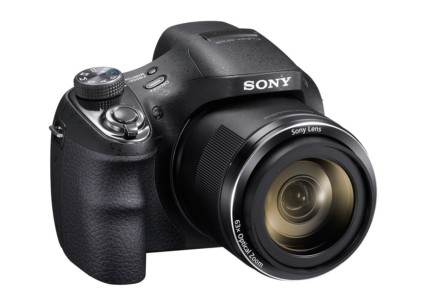
3-inch LCD screen, 20.1-megapixel sensor, and a whopping 63X optical zoom (Equivalent to 1550mm) and even more astonishing 500X digital zoom (we are unable to calculate the mm equivalent of this) – the Sony DSC-H400 is truly a superzoom monster. If you look at the DSC-H400 then it would seem like any other entry-level DSLR. Unlike many other point-and-shoot cameras, the H400 comes fitted with a viewfinder.
When it comes to image quality, the Sony H400 produces fairly good quality images up to ISO400, but from there on the quality of images become progressively bad showing color distortion and noise. Images at ISO 3200 are almost unusable. One area where the H400 excels is in shooting macro. The camera allows you to focus only 1cm away from your subject thereby enabling you to click superb macros.
Pros:
- 63X optical and 500X digital zoom
- Good quality images
- The existence of a viewfinder
- Nice and compact design
- Good macro performance
Cons:
- Bad ISO performance
- Shoots only 720P videos
- No Wi-Fi
- No off camera flash shoe
[ryvl video_url=”https://www.youtube.com/watch?v=c0bCG3WZO-M” auto_play=”yes”]Watch Sony Cybershot DSC-H400 full Review[/ryvl]
Nikon Coolpix B700 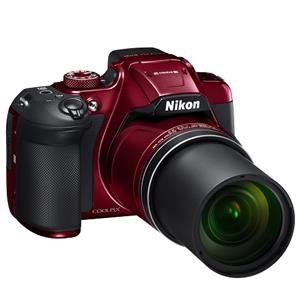
The Nikon Coolpix B700 follows up on the P610 and carries the same 60X zoom feature that the P610 had. Where it differs greatly from the P610 is in the fact that the B700 now has a 20-megapixel sensor compared to the 16.1-megapixel sensor that the P610 had. Another huge positive for the B700 is the fact that it is capable of shooting 4K and has built-in Wi-Fi and NFC. Other important features include a vari-angle 3-inch LCD screen and an electronic viewfinder.
The biggest difference in the B700 from other Nikon point-and-shoot cameras is the inclusion of the manual mode. So now, even though you are using a point-and-shoot camera, you can manually adjust shutter speed, aperture, and ISO. Like all bridge cameras, the B700 has a DSLR like a body with a tight grip. The B700 has a second function button (fn2) on the back (the P610 had only one function button).
The menu of the B700 is well laid out and is quite user-friendly. The vari-angle screen enables you to take selfies easily. Coming to performance, where the B700 truly excels is in the macro area. It allows you to focus on subjects from a distance of 1cm. Quality of images are good when you are completely zoomed out (wide angle), but they progressively deteriorate as you zoom in. Images become softer and they tend to lose their sharpness. In high-contrast shooting chromatic aberrations and purple fringing are common. Noise performance of the camera is pretty average. The camera produces fairly clean images till ISO 800. Over that, they become noisy and at ISO 3200 images become unusable.
Pros:
- Solid and compact design
- Good image quality
- Good lens performance
- Vari-angle screen for selfies
- Built-in WiFI, NFC, and viewfinder
- 4K shooting capability
- Good macro performance
Cons:
- Average noise performance
- Soft images at high zoom
- Barrel distortion at widest angle
[ryvl video_url=”https://www.reviewsxp.com/blog/nikon-coolpix-b700-review” auto_play=”yes”]Read Nikon Coolpix B700 Detailed Review[/ryvl]
Nikon A900 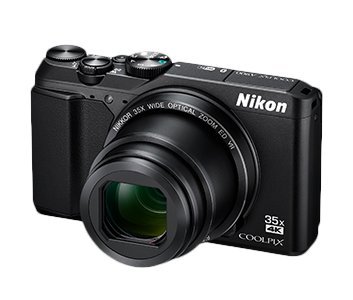
If you take a look at the Nikon A900, you would probably ignore it since it looks like one those tiny family cameras that your mom and dad use to shoot pictures. But that’s where it may deceive you.
Although it looks small, it is packed with features. 20.3-megapixel CMOS sensor, 35X optical zoom and 4K recording capability. What more can ask for from a tiny camera? It also features Nikon’s Snapbridge technology (introduced very recently to Nikon’s entry-level DSLRs) as well as full manual control.
Like all compact point-and-shoot cameras, the Nikon Coolpix A900 performs best when there is plenty of light available and when it does it produces pretty good images with nice colors.
The auto white balance performs better than most compact cameras. But when it comes to noise performance, the A900 doesn’t do so well. Even at 100 ISO, image softening can be seen if you are viewing them at 100 percent or more. Clicking images at ISO 3200 is best avoided.
Pros:
- 4K capability
- Snapbridge
- Compact size
- Good macro performance
Cons:
- Average noise performance
- Less than average image quality at high ISOs
[ryvl video_url=”https://www.youtube.com/watch?v=GMttPMQrck0″ auto_play=”yes”]Watch Nikon A900 full Review[/ryvl]
Canon SX540 HS 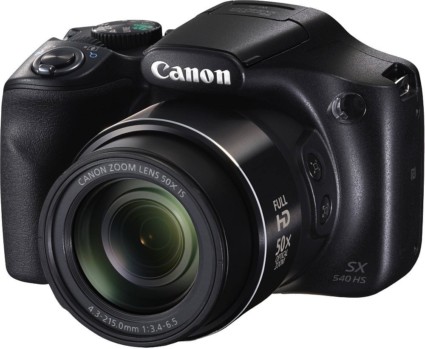
When it comes to point-and-shoots, Canon for some strange reason lags a bit behind compared to its competitors like Nikon and Sony. One of the very few good point-and-shoot cameras it makes is the SX540 HS. The camera has a high 50x zooming capability along with a 20.1 CMOS sensor. Other notable features include built-in Wi-Fi and NFC, face detection, built-in image stabilization, and a pretty impressive 5.9fps shooting capability (which is not that bad for a point and shoot camera).
Design of the SX540 HS is like any other camera in its segment. It has a DSLR like a body along with a firm and rubbery grip. When it comes to performance, there is nothing to write home about, but it’s also not the worst by any means. Take, for instance, the 5.9fps shooting capability. Now I know it’s not much, but for a point and shoot at this range it is not that bad either. That has been made possible because of the new DIGIC 6 image processor that this camera carries. The new sensor and processor combo brings in increased image details.
At its widest, the Canon SX540 HS lens can span out to 24mm equivalent enabling users to take landscape shots easily, while at its longest the lens is 1200mm equivalent which means you can click far-flung objects easily. But there’s a catch. The more you zoom in, more chromatic aberration you would get in your images> Images also tends to lose their sharpness.
Pros:
- 50X zoom
- Built-in WiFi, NFC and IS
- 9fps shooting capability
Cons:
- Bad ISO performance
- Image quality could be better at high zoom ranges
[ryvl video_url=”https://www.youtube.com/watch?v=wI44dMqM_Mo” auto_play=”yes”]Watch Canon SX540 HS full Review[/ryvl]
So these are all the good cameras under 25K that are available today.Have we missed anything? Is there anything you think should NOT be on the list? Do let us know.
We value your feedback and strive to make ourselves better based on them.We hope when you go out to buy a camera for 25K, you do keep this listing in mind.
Till next time. Cheerio!!